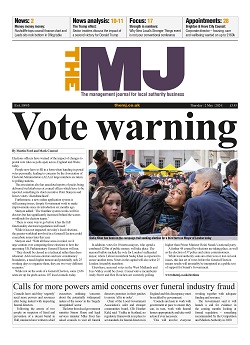In a labour market like ours right now the creation and development of a strong and effective employment value proposition (EVP) and supporting employer branding collateral is only the start to attracting the best talent to your organisation.
Inefficient, poorly designed recruitment processes negatively impact the EVP and employer branding you have heavily invested in, and the ability to attract candidates at all. Merely your ‘shop window’ or first step, the EVP and employer branding needs to be embedded throughout the entire candidate journey.
We are currently finding ourselves regularly in a position where our customers are telling us ‘We just can’t recruit’ and asking us to offer up guidance and advice as to why this might be. Many of these conversations are with customers who upon first sight have strong, impactful and credible employer brands. It is only when unpicking what happens to a candidate once they hit the ‘apply’ button that a whole new world is unfolded – and one that isn’t good.
So many organisations don’t think or have capacity to review their own internal recruitment processes – and they haven’t done for a long time. With candidates having choices and applying for multiple roles simultaneously and with ‘drop out’ rates at an all-time high now has never been a more crucial time to give consideration to a recruitment process overhaul; the candidate experience needs enhancement to encourage the best talent to join an organisation. We know that if the recruitment process is too complex, convoluted or lengthy candidates – often those of quality – disengage and go elsewhere. Investment in a recruitment process review where the entire end-to-end process is mapped and audited with recommendations made for improvement will only maximise upon the EVP and employer branding and bring the results organisations require and need.
The recruitment process like an employer brand makes a statement to a potential employee; it needs to embrace ongoing enablement for a candidate to find out more about the role and whether it is right for them, and whether the organisation is one where they want to work. These first impressions matter – and frankly for both parties; the process should be ‘high touch’, and personal, open, transparent and informative in order for each party to be satisfied they are making the right choice.
While an Applicant Tracking System (ATS) creates organisational automation and efficiencies they aren’t always as favourable as we might think when it comes to providing candidates with the best experience – the antiquated ones particularly. The feedback we get from candidates applying via an ATS includes anything from not hearing anything back regarding their application for four weeks to being advised if they don’t hear anything within six weeks, they can assume their application hasn’t been successful. No ‘high touch’ process then.
Another barrier we note to recruiting effectively is lack of consideration to personalisation; what may be an effective process to recruit to a senior level role is unlikely to be effective for a part-time junior level role. Too often we see generic recruitment process methodologies being utilised across all levels and role types – whether that be the application form, levels of interaction, the assessment tools used, the interview process, the list goes on. If we focus on assessment, dependent upon the level of role being recruiting to this can be somewhat daunting for some candidates particularly for those requiring suitable adjustment; all candidates need full explanations as to what to expect, why you are doing it, and the value in it for them – and you. This duty of care will result in greater engagement and a more confident candidate result.
A recruitment process review brings far more benefits however; real insight to the recruiting and hiring manager capabilities, capacity and their tolerance levels. Two examples; one being that those hiring managers under pressure to run their own recruitment processes struggle – they need training and guidance regarding how to interview appropriately, fairly and inclusively. This will impact upon the perfect recruit and the overall longer-term investment. And another example being with internal recruitment authorisation processes often being so bureaucratic and laborious hiring managers often resort to interim resources to fulfil their gaps, subsequently sending the organisations’ interim/temporary spend through the roof.
In summary, by undertaking a recruitment process review all painful touch points will be identified, enabling solid and effective improvements to be made. At the same time as improving the candidate experience and fulfilling the best quality of hires there will also be significant cost savings and efficiencies achieved.
Seems like a win-win to us.
Kate Wilson is development manager at Osborne Thomas
This article is sponsored content for The MJ



